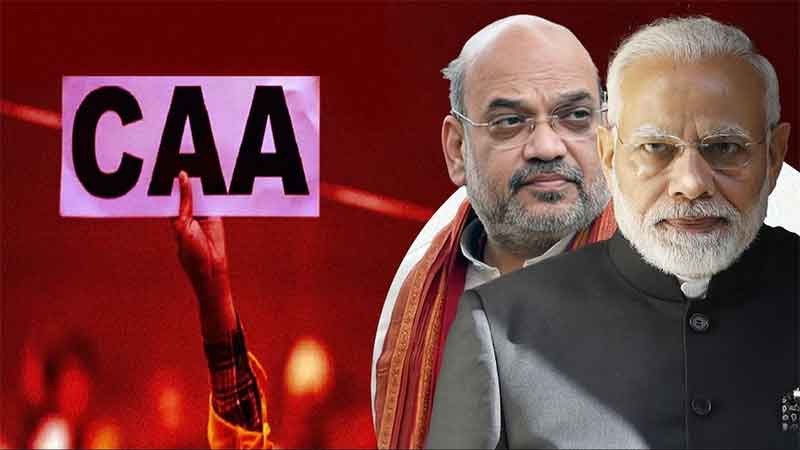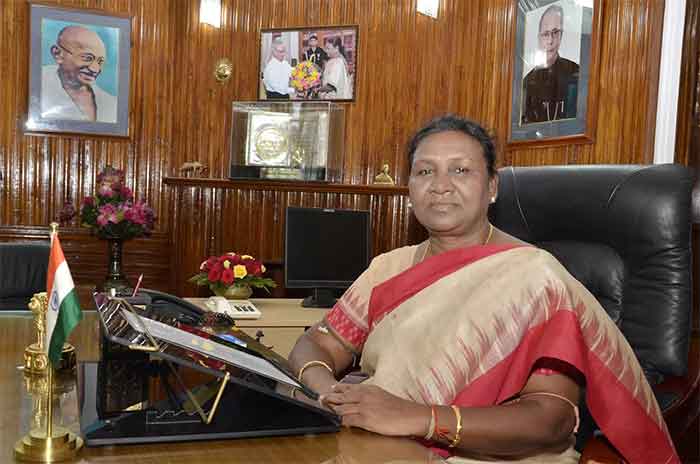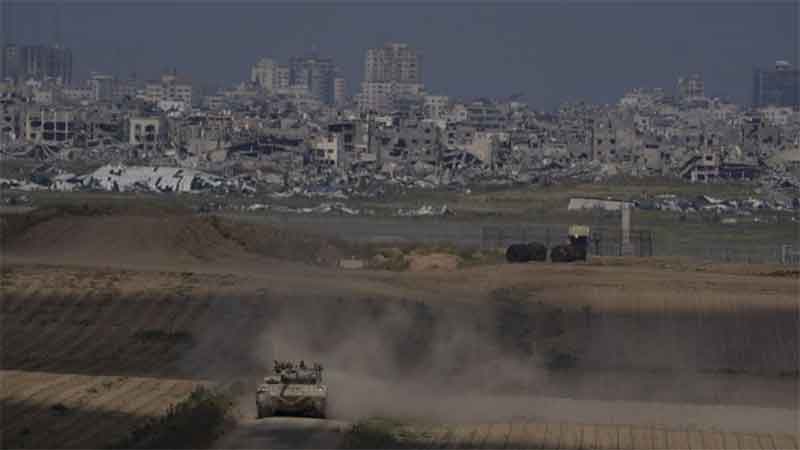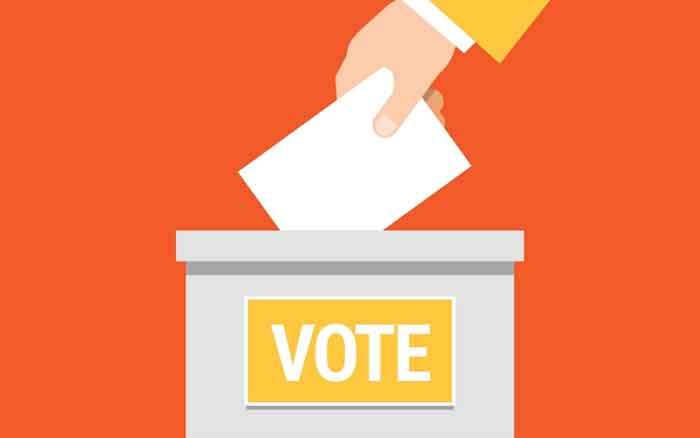
Globally, indigenous peoples’ land and cultural identity has been subjected to increasingly violent pressure in the last fifteen years, either for resources or due to demographic tensions over land.Indigenous land defenders attempting to protect fragile homelands from dispossession for mining, food, and logging projects are being subjected totargeted killings at twice the rate of previous decades. Between 2002 and 2017, some 1,558 people across 50 nationswere killed while protecting land, water, or wildlife. This death toll approximates levels found in war zones. Meanwhile, for Indigenous peoples in India settler occupation and development projects pose a serious threat to cultural and even human survival in the majority indigenous northeastern states.
Today the most serious existential hazard for indigenous north easterners is the newly installed Citizenship Amendment Act of 2019, enacted January 10, 2020. Media reports outside India have largely failed to consider the CAA’s impact on India’s indigenous peoples[1], focusing instead on the law’s impact in reinforcing a Hindu-Muslim binary. The new law would fast-track citizenship for millions of immigrants from Bangladesh, Afghanistan, and Pakistan(BAP nations) who arrived prior to 2015. Specifically, the law enables citizenship for “religiously persecuted minorities,” namely, Hindus, Sikhs, Buddhists, Jains, Parsis, and Christians (hereafter Hindus + 5 group) who are minorities in the BAP nations. But not Muslims. Indigenous north easterners are deeply anxious that this influx of new citizens will replace the indigenous population and culture with a majority Hindu electorate, thus flipping the region to Hindu majority control. Moreover, indigenous sovereignty over land is at stake if the new citizenry can easily purchase land and sign off on development projects. Constitutional protections for tribal sovereignty and the cultural integrity of indigenous communities hanging the balance. Indigenous organizations have brought legal challenges and demanded that the central government address their concerns.
Persecution, namely, systemic violation of human rights and denial of protection from the state is recognized at international law, yet nowhere does the law specify how cases of religious persection will be identified, and differentiated from economic migrants. The rationale provided by the government and Mr. Modi is that while Hindus may be persecuted in Islamic nations (meaning the BAP nations), Muslims will not. Yet this rationale does not account for “religiously persecuted” Muslim minorities including the Ahmadiyyas, the Shias and the Balochis of Pakistanor Myanmar’s Rohingyas, all Muslim.Sri Lankan Tamils, many of whom are Hindu, are also excluded. Likewise, the government has not explained why the act is limited to BAP countries, while persecuted minorities in Myanmar, Sri Lanka, Nepal, Bhutan, and even China, have not been included.
Protecting the Integrity of Indigenous Communities: Beyond the Hindu-Muslim Binary
Yet for the tribal communities in India’s northeast, the new law poses troubling questions of survival and continued existence in their own lands. All eight states of India’s northeast – Assam, Meghalaya, Tripura, Manipur, Mizoram, Nagaland, Sikkim, and Arunachal Pradesh – are majority indigenous states. Under India’s Constitution, these communities are denoted as “Scheduled Tribes” and are provided with special rights to land and cultural autonomy. For the northeast, the Sixth Schedule (1949) of the Constitution recognizes cultural sovereignty, independent languages and religious traditions, control of immigration, and provides partial sovereignty over land, including the right to control development or other projects that may threaten political or cultural integrity. Significant to the CAA is that Assam, Meghalaya, Tripura, and Mizoram – all of whom are protected under the Sixth Schedule – all share borders with Bangladesh and have long served as gateways for economic migrants entering India. (How many of these will now claim “religious persecution” under CAA remains to be seen.)
Home Minister Amit Shah and Mr. Modi’s rationale to protect the Hindus + five group does not track well with indigenous sovereignty. That is, the nation’s sustained focus on the perceived split between Hindus and Muslims, entrenched and reinforced by the new law, both blurs and erases indigenous religious practices. Indigenous communities – denoted as Scheduled Tribes – represent roughly 9% of India’s population and there is no census category nor official sanction or recognition of indigenous religious traditions. The media’s focus on the Hindu-Muslim dividefurther camouflages the rich spiritual traditions of Adivasi and indigenous northeasterners.Moreover, protesters have largely failed to recognize the way the “Hindu-Muslim binary” entrenches erasure of minority and tribal religions, that do not readily fit the categories elaborated by the law. This erasure then empowers the government to advance its Hindu superiority narrative and therein its appeals to indigenous peoples to convert to Hinduism. With the new law, the ruling Bharatiya Janata Party has managed to bolster arguments that India’s immigration program is not only progressive, but generous. Meanwhile, they are also able to rewrite the landscape of the indigenous northeast anew: as a land emptied out of its indigenous community.
The law also undercuts another important provision of India’s Constitution: the Sixth Schedule and the Assam Accords of 1985. The Sixth Schedule enshrines sovereignty specifically for Indigenous peoples in Assam, Meghalaya, Tripura, and Mizoram. Ahead of any significant extraction, development, land usage, or demographic shift, STs in these states retain sovereignty over their lands and the right to elect autonomous councils. As such they retain the right to refuse any population transfer or development proposal which does not suit the people’s will, through actions such as refusing to issue “no objection certificates” for harmful or risky projects, or demographic re-engineering to empower a Hindu majority population with the right-to-vote.
The Assam Accords emerged after a multi-year agitation spearheaded by the All Assam Student Union. Under the agreement, any undocumented Bangladeshi migrants who entered India up until March 24, 1971, having fled the turmoil in East Pakistan (present-day Bangladesh) during the Indo-Pakistani War of 1971, were guaranteed Indian citizenship. Yet this was the final cutoff date agreed upon to address AASU’s concerns about being overwhelmed by Bangladeshi immigrants and other non-indigenous outsiders, and the new law has extended that cutoff date some 44 years to December 31, 2014. Indigenous Assamese are most concerned about being pushed out of their own land, and have launched some of the strongest resistance campaigns opposing the new law. The tragic deaths of five protestors, including Assamese students, were among the first casualties of the December 2019 protests.
Recognizing early that the CAA posed the risk of massive population transfer into the northeast, indigenous student and civil society groups launched sit-ins, strikes, and marches to fend off land grabs, as early as January 2019. Their demands: to continue living in their own lands, to protect lands from being purchased by or illegally occupied by outsiders, and to exercise sovereignty over their land and their cultural identity as guaranteed under the Indian Constitution.Due to the outpouring of opposition to the bill concentrated in the northeast, in early February 2019 the measure was tabled by India’s Parliament, and indigenous communities breathed a collective sigh of relief. Yet in the wake of the ruling Bharatiya Janata Party’s (BJP) landslide victory in May 2019 securing Mr. Modi’s second term, the BJP claimed a mandate to usher in its pro-Hindutva agenda and began ticking off its elections promises: Abrogation of Article 370 revoking the special status of Kashmir, introducing the National Register of Citizens in Assam, and advancing the citizenship bill, which passed the Lok Sabha on 11th December 2019.
Since early December 2019, from initial protests in Assam, Meghalaya, and Tripura, indignation spread to south to Kerala, Hyderabad, and by now the entire country has risen up in defense of the secular Constitution, reading the Preamble aloud at rallies and on campuses.Specifically criticism has highlighted Article 14 (equality before the law) and Article 15, (guards against discrimination on basis of religion, caste, race, sex, and place of birth). In this view the new law violates the spirit and letter of the Indian republic. Yet reporting on the constitutionality of the law and the threats it poses to the nation’s 200 million Muslims and many lakhs immigrant Muslims, has far overshadowed the law’s impact on 9% of the country’s population: its indigenous Scheduled Tribes.
My analysis here treads a fine line: I do not discount the horrifying threat of state violence accompanying the law, which has already manifest in some ten detention camps built to contain “illegal Muslim immigrants” and anyone who cannot prove Indian citizenship, including those who have lived as Indian citizens for generations. The very real exercise of state violence to detain and export those who have fallen outside the National Register of Citizens’ remit must be quickly redressed to prevent a humanitarian catastrophe. At the same time, we must heed the voices of indigenous communities. Illegal occupation and settler colonialism of Indigenous lands did not end with the liberation of India from its British colonial overlords. Many indigenous Indians never chose to be Indian citizens in the first place, but had lands seized through British colonialism and the Indo-Pakistani War. In Nagaland, militarized indigenous resistance to the Indian state’s occupation continues into the present and the CAA has only served to ignite anger and sew discord across the entire northeast.
In some ways, the situation of immigrant Muslims parallels that of African slaves and other forced migrants to the Americas under the system of chattel slavery. African chattel slave immigrants are “arrivants” for U.S. indigenous Chickasaw writer Jodi Byrd: they did not choose to be American, nor did they migrate to the U.S. with any intention to colonize the land or disrupt the lifeways of indigenous Native Americans. Arrivants are simultaneously victims of violence vis-à-vis Euro-American overlords and unwitting perpetrators of violence against Native Americans who were pushed off their ancestral lands. Seen from this perspective, both indigenous northeasterners and immigrant Muslims are subjected to the communalist violence of the BJP agenda as implemented by the Indian state. Under this system, Muslim settlers are imperiled by the violence of exclusion while indigenous communities of the northeast – and their lives and livelihoods – are endangeredthrough a violence of erasure and minoritization in their ancestral lands. Neither form of state power is acceptable, and as a result, these two vast constituencies are placed in opposition to one another, as the Hindu majority gains political and ideological terrain across the country.Under this regime, the strategic trap of dividing the oppositionensnares both communities within the communalist dragnet, ideologically blinding them to the potential tactic of uniting forces in a shared movement to liberate all of those endangered by the CAA and the NRC.
“We will be reduced to a minority in our home state”:Demographic Burden onIndigenous peoples in the Northeast States
For civil society across India’s Northeast, the law is seen as another attempt at radically engineering a population transfer – to shift from tribal autonomy to majority Hindu – and thereby garner sufficient votes to flip the Northeast into a BJP stronghold.Should this social engineering plot succeed, BJP’s northeastern development strategy could then swing into full force, paving the way for a range of capital intensive development plans, including enhanced transportation and communications infrastructure, access to new mining and natural resource interests, not to mention opening the doors to both foreign and domestic investment as with investor’s summits such as #MomentumJharkhand (in 2017), and Special Economic Zone (SEZ) expansion in Maharashtraand Andhra Pradesh and beyond.In the thirty years since India’s economic liberalization in 1991 and promises of capitalism’s benefits trickling down to the nation’s poor, the percentage of Indian citizens suffering from poverty has only grown. Today some 1/3 of India’s population subsists on $1 per day.
Among the undocumented BAP immigrants, the vast majority have entered from Bangladesh, though precise estimates for Bangladeshi immigrants are contested. In 2001, the Home Affairs minister reported a figure of 12 million; in 2004 Home Affairs Minister Jaiswal listed this as 20 million and in 2016, the number was reported as 24 million by Minister Kiren Rijiju. (Each of these figures includes Hindus, Muslims, and other religions.) While the exact numbers vary, the majority of these Bangladeshis reside in five states of India’s Northeast. Specifically, some 5 million remain in Assam; 30,000 in Meghalaya; 800,000 in Arunachal Pradesh; 325,400 in Tripura; 59,500 in Nagaland. To clarify what these numbers mean: under CAA more than half of these newcomers would occupy northeastern states comprising less than 8% of India’s total land mass.
The law poses troubling questions of survival and continued Indigenous existence in their own lands. Aside from threatening the basic tenets of the Indian republic, civil society groups charge that the amended citizenship act violates the United Nations Declaration on the Rights of Indigenous Peoples (UNDRIP) to self-determination. In light of the disproportionate burden of these immigrants on Northeastern states, the North Eastern Students Organization, an umbrella organization of all indigenous student groups from the region, filed a petition in India’s Supreme Court challenging CAA’s legality. NESO’s petition joins some 143 other legal petitions challenging the law.
On December 18, the nation’s highest court postponed its review until January 22, called upon the central government to respond to all 143 petitions over the next 4 weeks. In January 2020, the Supreme Court refused to issue a stay on the citizenship law; however, it did recognize that the northeast’s burden is distinct from the rest of the country, legally and demographically. Critically, the Assam Accords place a certain onus on the government to limit the cutoff date for citizenship to March 24, 1971. As such the court will hear the northeast petitions separately from the other cases and judgments are pending at this time.
NESO’s petition raised the question of the Assam Accords and assurances for cultural identity; violation of the Constitution’s Article 14 guaranteeing equality to all under the law; and raised the question of how persecuted minorities would be identified. NESO also questioned how indigenous rights guaranteed both under the Sixth Schedule and international law such as the UNDRIP could be ensured with an influx of migrants vastly outnumbering the current indigenous residents of the northeastern states. Being flooded by these migrants thus poses an existential question of survival for indigenous communities, as the NESO petition argues. Displacement, as threatened by the CAA’s mandate, is debilitating. It engenders significant socio- and economic stress, not to mention a colonial violation of indigenous lifeways in favor of settler visions of “development.” Indigenous organizations across the northeast continue to turn out in large numbers to register opposition to the law. On January 22, the Supreme Court’s scheduled hearing on CAA, all universities across the northeast remain shuttered as students turned out to rally for the courts to respond to their case.
“We are not a dumping ground for illegal immigrants”: India’s northeast calls for ILP to demarcate indigenous land
In response to the Citizenship Amendment Act, Meghalaya and several northeastern states have renewed calls for an ILP (Inner Line Permit). The Inner Line Permit is a travel permit that requires Indian nationals to obtain advance clearance to enter certain indigenous regions; it would also regulate foreign tourists’ entry. In Meghalaya, the state parliament approved an amendment to add an ILP on December 19; the ILP is now pending central government approval. Like many administrative procedures, the ILP is a remnant of an 1873 British colonial law, and stems from efforts to maintain a royal monopoly on tea, oil, and the ivory trade. Post-independence, the ILP has been employed to protect vulnerable tribal cultures from an influx of outsiders. Under the new citizenship law, with its influx of non-indigenous settlers, the ILP would offer the benefit of a buffer zone to ensure tribal autonomy in certain sensitive regions. Just prior to the CAA’s passage by the Rajya Sabha,the government approved the ILP in Manipur and the government reassured Arunachal Pradesh, Mizoram, and Nagaland they will enjoy ILP protections. However, some reports have criticized the government’s haphazard solutions in expanding the ILP, noting that stateless migrants who occupy the ILP areas will be difficult for officialdom to distinguish from indigenous residents. Reassurances in these few states further inflame tensions in Assam and Meghalaya where indigenous communities feel pressure to absorb the bulk of the migrants.
Despite inspiring some of the largest displays of student and citizen-led protest since Gandhi’s Satyagraha protest against British colonialism, the CAA went into effect on January 10, 2020. Police crackdowns on protestors were particularly harsh in targeting BJP-ruled states, although mass uprisings led by students and citizens from all backgrounds – including former BJP supporters – continued across the country through January 2020.Many observers have raised concerns that unlike Pakistan, at the time of its independence, India elected not to become a communalist, religious nation. Even though Hindus comprise the majority religion at 80%, the mass movement against the CAA suggests that many Indians, especially the youth, clearly identify as members of a pluralist, secular state. India’s new law raises fundamental questions about constitutionality and strikes at the very heart of visions of India’s founders to craft a secular democratic nation-state in which all creeds, castes, and ethnic communities would be embraced.
Whether the bill is deemed constitutionally viable or not by the nation’s highest courts,India’s citizenry is primed to keep up the pressure on Delhi. Deeply troubling, the disproportionate pressure of settling the bulk of these migrants in one small corner of the northeast, then, fuels a tinder box of resentment toward these hapless migrants as invaders strategically positioned by the BJP and the Modi-Shah duo. Indeed it may simply be a matter of time before such sentiments explode in acts of physical violence or aggression targeting these newly enfranchised Hindu citizens.
For these indigenous communities, the settler colonial threat looms too large. Hostile takeovers of indigenous lands continue through far too many examples of indigenous genocide, culture-cide, and eco-cide across the world. Tragically, settler colonialism sustains itself on a global scale through private and public institutions sanctioned by the settler state, such as the violence perpetuated against indigenous land protectors of Wet’suwet’en, atStanding Rock, in Brazil’s Amazon, and in the Philippines.And in Assam, Tripura, Meghalaya, Mizoram, and Manipur, the CAA’s demographic burden is disproportionate: even though northeastern states represent a mere 8% of India’s land mass,they are being asked to bear the weight of more than half of the newly instated citizens, under the CAA.
BIO: Maya D.Cheynoux is an engaged scholar and activist focused on environmental justice and indigenous issues in India and the Asia-Pacific region.
[1]For this writer, India’s Scheduled Tribes are Indigenous peoples who should enjoy full privileges under the United Nations Declaration on the Rights of Indigenous Peoples.However, the Indian government does not recognize them as such, and claims that “All Indians are indigenous to this land.” While both are listed as “Scheduled Tribes,” neither Indigenous peoples in the northeast nor Adivasis in mainland India are recognized as entitled to separate “Indigenous rights” under Indian law, aside from the Fifth and Sixth Schedules of the Indian Constitution.
SIGN UP FOR COUNTERCURRENTS DAILY NEWS LETTER













































